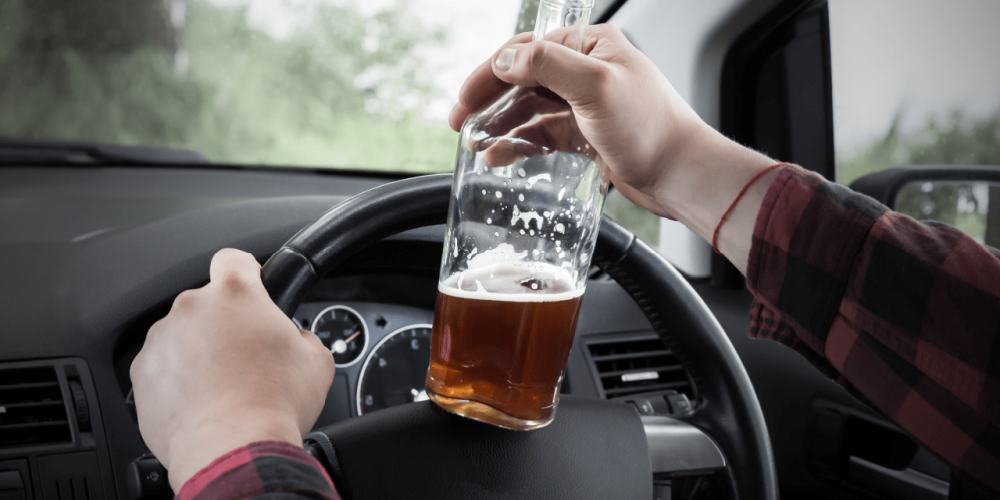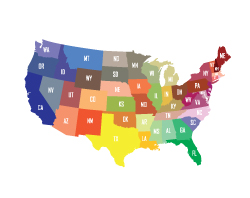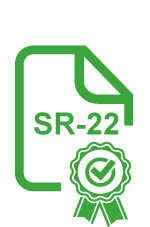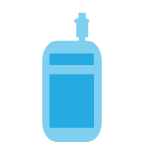Current Facts: What Are Drunk Driving Arrests and How They Impact Lives
Every year, one million individuals are arrested in the United States under charges of drunk driving, representing only a small portion of actual alcohol-impaired drivers on the road. Every day, about 34 people in the United States die in drunk-driving crashes — that’s one person every 42 minutes. These staggering numbers reveal the true scope of how drunk driving arrests affect American communities, families, and the justice system.
What Constitutes a Drunk Driving Arrest
Drunk driving arrests occur when law enforcement detects a driver operating a vehicle with a blood alcohol concentration (BAC) at or above the legal limit. In most states, the legal limit is 0.08% BAC for drivers aged 21 and older, with Utah being the exception at 0.05% BAC. Zero tolerance laws make it illegal for drivers under 21 to drive with any measurable alcohol, with 14 states setting 0.00% BAC limits and 34 states allowing up to 0.02% BAC.
The arrest process typically begins during routine traffic stops, DUI checkpoints, or following traffic violations. An individual will drive drunk 80 times on average before they are arrested for the first time for driving under the influence. This statistic underscores why enforcement efforts continue despite the high number of arrests annually.
Current Arrest Statistics and Trends
Recent data reveals alarming trends in drunk driving arrests across the United States:
2024-2025 Arrest Numbers:
- Approximately 1 million arrests are made annually for driving under the influence of alcohol and drugs
- DUI arrest rates vary widely by state, ranging from 250 to over 640 per 100,000 residents
- California, Texas, and Florida report the highest total DUI arrests, with California recording over 112,000 arrests in a single year
Demographic Patterns:
- The 21-to-24-year-old age group shows the highest percentage of drunk drivers involved in fatal crashes
- Men account for roughly 74% of people arrested for drunk driving
- In Illinois, first-time offenders made up 87% of all DUI arrests, while women accounted for 25% despite representing 50% of licensed drivers
Why Arrests Happen Without Accidents
Many people mistakenly believe drunk driving arrests only occur after accidents. However, law enforcement actively pursues impaired drivers through various methods:
Proactive Enforcement:
- Sobriety checkpoints and saturation patrols
- Traffic violations that lead to DUI investigations
- Anonymous tips and suspicious driving reports
- Enhanced enforcement during high-risk periods (holidays, weekends)
Drivers with a BAC of 0.08% are approximately 4 times more likely to crash than sober drivers, while those at 0.15% BAC are at least 12 times more likely to crash. This exponential increase in crash risk motivates law enforcement to intervene before accidents occur.
Immediate vs. Long-Term Life Impact
Immediate Consequences: The moment handcuffs click, drunk driving arrests trigger an avalanche of immediate problems. License suspension often begins within hours, stranding individuals without transportation to work, family obligations, or court appearances. Bail amounts can reach thousands of dollars, while impounded vehicles add storage fees and recovery costs.
Long-Term Devastation: The total economic cost of drunk driving accidents reaches $58 billion annually, with individual costs ranging from $10,000 to $25,000 including fines, legal fees, and insurance increases. Beyond financial impact, convicted individuals face employment screening challenges, professional license restrictions, and social stigma that can persist for years.
The Ripple Effect on Families and Communities
In 2023, among children 14 and younger killed in motor vehicle crashes, 25% were killed in drunk-driving crashes, with 52% of those deaths occurring when the child was in the vehicle driven by the drunk driver. This statistic demonstrates how drunk driving arrests, while necessary for public safety, often emerge from situations that have already shattered families and communities.
The economic burden extends far beyond individual cases. When accounting for quality-of-life losses, the total societal cost of drunk driving reaches $364 billion annually. This massive figure represents lost productivity, healthcare costs, legal proceedings, and the immeasurable human suffering that drunk driving arrests seek to prevent.
Drunk driving arrests affect over 1 million Americans annually, turning ordinary traffic stops into life-altering legal battles. Behind each arrest statistic lies a person facing potential jail time, license suspension, thousands in legal fees, and consequences that can echo through their career, family relationships, and financial stability for years to come.
You’ll discover proven strategies for challenging evidence, understand when to seek legal representation, and learn practical steps to protect yourself and your family from the devastating impact of drunk driving arrests. Most importantly, you’ll gain actionable knowledge that can make the difference between a life-changing conviction and a more favorable outcome.
Legal Breakdown: The Drunk Driving Arrest Process Step-by-Step
Understanding the drunk driving arrest process can mean the difference between protecting your rights and inadvertently damaging your defense. Each stage follows specific legal protocols, and knowing what to expect—and what officers must do—gives you crucial advantages during this stressful experience.
Traffic Stop: Initial Contact and Field Sobriety Tests
Step 1: The Initial Stop Officers must have reasonable suspicion to initiate a traffic stop, such as erratic driving, traffic violations, or equipment problems. Common procedural errors include failing to document the reason for the stop or conducting stops based solely on anonymous tips without corroborating evidence.
Step 2: Initial Assessment During the first contact, officers observe your speech, coordination, and demeanor while checking your license and registration. You have the right to remain silent beyond providing basic identification. Officers look for signs like bloodshot eyes, alcohol odor, or slurred speech, but these symptoms can result from medical conditions, fatigue, or medications.
Step 3: Field Sobriety Tests If officers suspect impairment, they’ll request standardized field sobriety tests including the horizontal gaze nystagmus (eye tracking), walk-and-turn, and one-leg stand tests. Your Rights: You can refuse these tests in most states, though refusal may provide evidence of consciousness of guilt. Officers must explain tests clearly and demonstrate properly—failure to follow standardized procedures can invalidate results.
Arrest Procedure: Miranda Rights and Booking Process
Step 4: Arrest Decision Officers arrest you if they believe they have probable cause that you’re driving under the influence. This decision often comes after field sobriety tests or preliminary breath tests, though officers can arrest based on observations alone.
Step 5: Miranda Warnings Once arrested, officers must read your Miranda rights before custodial interrogation begins. Critical Error: Many officers fail to provide these warnings at the proper time, potentially making your statements inadmissible in court. You have the right to remain silent and request an attorney immediately.
Step 6: Transportation and Booking You’ll be transported to jail or a processing facility where officers record personal information, take fingerprints, and conduct inventory searches. The booking process typically takes 2-4 hours, during which time your BAC may continue rising or falling—a factor that can affect later chemical test results.
Chemical Testing: Blood, Breath, and Urine Requirements
Step 7: Implied Consent Advisement Officers must inform you about your state’s implied consent laws, which typically require chemical testing in exchange for driving privileges. Your Rights: You can refuse testing, but most states impose automatic license suspension and allow refusal to be used as evidence.
Step 8: Test Administration Chemical tests must be administered by qualified personnel using properly calibrated equipment. Common Errors: Machines not calibrated recently, improper observation periods before breath tests, or contaminated blood samples can all invalidate results.
Step 9: Test Results and Release Results determine whether you’re released on bail or held longer. Officers must properly preserve test samples and maintain chain of custody documentation. Your Rights: You typically have the right to independent testing at your expense.
Throughout this process, officers must follow strict protocols. Documentation errors, timing issues, or procedural violations can provide strong defense opportunities, making it essential to remember details and contact experienced legal counsel immediately after your release.
Penalty Overview: Consequences of Drunk Driving Arrests by State
The consequences of drunk driving arrests vary dramatically across the United States, creating a complex landscape of penalties that can trap the unprepared. Understanding these escalating punishments—from first-time fines to life-altering felony charges—is crucial for anyone facing DUI charges or seeking to comprehend the true cost of impaired driving decisions.
First Offense: Fines, License Suspension, and Jail Time
Standard First-Time Penalties Across Key States:
| State | Fines | Jail Time | License Suspension | Additional Requirements |
| California | $390-$1,000 | Up to 6 months | 6 months | DUI school, possible IID |
| Texas | Up to $2,000 | 3 days-6 months | Up to 1 year | Mandatory 3 days jail |
| Florida | $500-$1,000 | Up to 6 months | 6 months-1 year | DUI school required |
| New York | $500-$1,000 | Up to 1 year | 6 months | Victim impact program |
| Illinois | $2,500 max | Up to 364 days | 1 year | Community service option |
Timeline Example – First Offense Process:
- Day 1: Arrest and booking, immediate license confiscation
- Days 2-7: Arraignment, bail hearing, temporary license issues
- Days 8-45: Discovery phase, plea negotiations
- Days 46-90: Trial or plea agreement, sentencing
- Month 4-18: Serving sentence, completing requirements
Cost Breakdown Analysis: First-time drunk driving arrests typically cost between $8,000-$12,000 total, including:
- Base fines: $500-$2,000
- Court fees and assessments: $1,000-$3,000
- Attorney fees: $2,500-$5,000
- License reinstatement: $200-$500
- Insurance increases: $2,000-$4,000 annually
- DUI school/treatment: $500-$1,500
Enhanced Penalties: Aggravating Factors That Increase Punishment
High BAC Penalties (.15% or Higher):
- Alabama: 90-day license suspension and 2-year ignition interlock requirement for first offense
- Illinois: Mandatory 2-day jail minimum and $1,250 fine for first offense
- Florida: Enhanced fines and extended IID requirements
Child Endangerment Additions:
- Texas: Additional $10,000 fine and up to 2 years jail for passengers under 15
- California: Additional misdemeanor charges and enhanced penalties
- Most States: Automatic child protective services involvement
Accident-Related Enhancements:
- Property Damage: First-degree misdemeanor in most states
- Personal Injury: Third-degree felony charges possible
- Fatality: Vehicular manslaughter or homicide charges
Refusal Penalties:
- Automatic License Suspension: 1-2 years in most states
- Enhanced Criminal Penalties: Refusal can be used as evidence of guilt
- Ignition Interlock Requirements: Often mandatory for reinstatement
State-Specific Aggravating Factors:
Utah: Lowest BAC limit (.05%) with enhanced penalties for any impairment Arizona: Extreme DUI category (.15%+) with mandatory jail time Georgia: “Super DUI” (.15%+) with enhanced fines and longer license suspension
Penalty Progression Chart:
- First Offense: Misdemeanor, fines $500-$2,000, possible jail
- Second Offense: Enhanced misdemeanor, mandatory jail, doubled fines
- Third Offense: Felony in most states, 1-5 years prison, $5,000+ fines
- Fourth+ Offense: High-level felony, potential life sentences, permanent license loss
The escalating nature of drunk driving arrest penalties reflects the justice system’s recognition that repeat offenders pose increasingly dangerous threats to public safety. Each subsequent arrest triggers exponentially harsher consequences, often culminating in felony convictions that permanently alter lives through prison sentences, career destruction, and the lifelong stigma of a criminal record.
Defense Strategies: How to Fight Drunk Driving Arrest Charges
Successfully fighting drunk driving arrest charges requires a strategic approach that challenges the prosecution’s evidence at every level. With the right defense tactics, even seemingly insurmountable cases can result in reduced charges or complete dismissals. Understanding these proven strategies can mean the difference between conviction and freedom.
Evidence Challenges: Questioning BAC Test Accuracy
Breathalyzer Reliability Issues: Breathalyzer tests, while widely used, have significant accuracy limitations. These devices carry error rates ranging from 0.005% to 0.02%, which can dramatically affect results near the legal limit. Common challenges include:
- Calibration Problems: Machines require regular calibration for accurate readings. Defense attorneys routinely examine maintenance logs to identify periods when devices weren’t properly calibrated.
- Mouth Alcohol Contamination: Recent use of mouthwash, breath spray, or even burping can introduce mouth alcohol that skews results higher than actual blood alcohol levels.
- Environmental Interference: Temperature fluctuations, radio frequencies, and electrical interference can produce false readings.
Rising BAC Defense Strategy: This particularly effective defense argues that while your BAC may have tested above 0.08% when measured, it was below the legal limit while actually driving. The defense works best when:
- BAC results are close to the legal limit (0.08% to 0.11% range)
- Significant delay occurred between driving and testing (30+ minutes)
- Evidence shows recent alcohol consumption before driving
Case Study Example: A California driver with a 0.09% BAC reading had charges dismissed when expert testimony proved he consumed his last drink 10 minutes before being stopped. Testing occurred 45 minutes after the stop, demonstrating his BAC was likely 0.07% while driving.
Blood Test Challenges: Blood tests, though more accurate than breath tests, face their own vulnerabilities:
- Chain of Custody Issues: Improper handling or storage can invalidate results
- Contamination Risks: Alcohol-based cleaning agents used at draw sites can elevate readings
- Fermentation: Improperly stored samples can produce alcohol through bacterial fermentation
Medical Factors: Health Conditions That Affect Test Results
Diabetes and Hypoglycemia: Diabetic conditions create compelling defenses through multiple mechanisms:
- Ketone Production: Diabetics produce ketones that breathalyzers can mistake for alcohol, creating false positives
- Hypoglycemic Symptoms: Low blood sugar causes slurred speech, confusion, and coordination problems that mimic intoxication
- Hyperglycemic Effects: High blood sugar produces ketone breath odor that officers mistake for alcohol
Expert Witness Testimony Example: A Michigan diabetic driver avoided conviction when a forensic toxicologist testified that his 0.10% BAC reading was inflated by ketones, while medical records showed he was experiencing hypoglycemia during the arrest.
Neurological Conditions: Various neurological disorders can mimic intoxication symptoms:
- Epilepsy: Post-seizure confusion and disorientation resemble intoxication
- Parkinson’s Disease: Tremors and movement difficulties appear similar to alcohol impairment
- Traumatic Brain Injury: Cognitive and physical symptoms overlap with intoxication signs
Prescription Medications: Certain medications create false positives or enhanced impairment:
- Blood Thinners: Common diabetic medications can affect alcohol metabolism
- Anxiety Medications: Can amplify alcohol effects at lower BAC levels
- Pain Medications: Interact with alcohol to create impairment at legal BAC levels
Expert Witness Importance: Medical experts prove crucial in establishing alternative explanations for observed symptoms:
- Forensic Toxicologists: Challenge BAC test methodology and interpretation
- Medical Doctors: Explain how conditions affect test results and behavior
- Neurologists: Testify about brain injury effects on coordination and cognition
Building Medical Defenses: Successful medical defenses require:
- Comprehensive Medical Records: Documentation of ongoing conditions and treatment
- Expert Witness Testimony: Qualified professionals who can explain complex medical issues to juries
- Timing Evidence: Proof that medical episodes occurred during the arrest timeframe
- Alternative Explanations: Demonstrating medical causes for observed impairment signs
The key to successful drunk driving arrest defense lies in thorough investigation, expert testimony, and aggressive challenge of prosecution evidence. While no defense guarantees success, these strategies significantly improve outcomes by creating reasonable doubt about guilt and exposing weaknesses in the state’s case. The most effective approach combines multiple defense strategies, using constitutional violations, scientific challenges, and medical evidence to build comprehensive defenses that protect defendants’ rights and futures.
Smart Moves: What to Do Immediately After Drunk Driving Arrests
The actions you take in the first hours and days after drunk driving arrests can dramatically impact your case outcome. Making the right moves immediately protects your legal rights, preserves crucial evidence, and positions you for the strongest possible defense. Here’s your essential roadmap for navigating this critical period.
Emergency Actions: First 48 Hours After Arrest
Hour 1-6: Immediate Post-Release Priority Checklist
- Request a DMV Hearing: You have only 10 days in most states to request an administrative license suspension hearing. This is separate from your criminal case and critical for keeping your driving privileges.
- Document Everything: While memories are fresh, write down every detail about your arrest, including:
- Exact time and location of the stop
- Officer’s stated reason for pulling you over
- Weather conditions and lighting
- Your physical condition and recent activities
- Any medications taken or medical conditions experienced
- Preserve Physical Evidence: Save clothing worn during arrest, receipts from restaurants/bars, and any items that might contain relevant information.
Day 1-2: Critical Administrative Tasks
- Notify Your Insurance Company: Some policies require immediate notification of arrests
- Arrange Transportation: Plan for potential license suspension impacts on work and family obligations
- Secure Bail Information: Understand all conditions of your release and comply strictly
Day 3-7: Case Preparation Foundation
- Gather Medical Records: If you have diabetes, take medications, or have relevant health conditions
- Collect Witness Information: Contact anyone who saw you before or during the arrest
- Photograph the Scene: Return to the arrest location to document road conditions, signage, and lighting
Documentation Tips: Preserving Evidence for Your Defense
Video Evidence Preservation:
- Request Police Dashboard/Body Camera Footage: File formal requests immediately, as departments may delete footage after 30-90 days
- Locate Surveillance Cameras: Identify nearby businesses, traffic cameras, or security systems that might have recorded relevant footage
- Personal Device Evidence: Download and preserve any photos or videos from your phone taken before/during the incident
Medical Documentation Strategy:
- Emergency Room Records: If you received medical attention, obtain all records and test results
- Prescription Documentation: Gather all current medication information and prescribing physician contacts
- Medical History: Compile records of any conditions that could affect BAC testing or field sobriety performance
Financial and Timeline Records:
- Credit Card/Bank Statements: Show where and when you consumed alcohol
- Cell Phone Records: Demonstrate your timeline and activities
- Receipt Collection: Maintain all receipts from the day of arrest showing purchases and locations
Cost Analysis: Financial Impact of Drunk Driving Arrests
The true financial devastation of drunk driving arrests extends far beyond initial fines, creating a cascading effect that can cost individuals $15,000-$25,000 or more. Understanding these comprehensive expenses helps you prepare for the complete financial impact and identify potential cost-saving strategies.
Direct Costs: Fines, Fees, and Legal Expenses
Court-Imposed Financial Penalties:
- Base Fines: Range from $500-$2,000 for first offense, with significant regional variations
- Court Fees and Assessments: Additional $1,000-$3,000 in administrative costs, victim impact fees, and court processing charges
- Penalty Assessments: California adds 4-5x the base fine amount in penalty assessments, turning a $500 fine into $2,500+ total
Legal Representation Costs:
- Attorney Fees: $2,500-$7,500 for experienced DUI attorneys, with complex cases reaching $10,000+
- Expert Witnesses: Toxicologists and medical experts cost $2,000-$5,000 per case
- Administrative Hearings: DMV representation adds $500-$1,500 to legal costs
Mandatory Program Expenses:
- DUI School: $500-$1,500 depending on state requirements and program length
- Alcohol Treatment Programs: $1,000-$5,000 for court-ordered counseling
- Victim Impact Panels: $50-$200 for mandatory attendance
Prevention Focus: How to Avoid Drunk Driving Arrests Entirely
The most effective defense against drunk driving arrests is prevention. With the average DUI costing $15,000-$25,000, even expensive alternative transportation represents massive savings. Smart planning and modern technology make it easier than ever to avoid the life-changing consequences of impaired driving.
Safe Alternatives: Rideshare, Public Transit, and Designated Drivers
Rideshare Services – Your Most Reliable Option:
- Uber/Lyft Availability: 24/7 service in most urban and suburban areas, with average wait times under 10 minutes
- Cost Comparison: $15-$40 typical ride vs. $25,000+ DUI costs – rideshare is 99.9% cheaper than drunk driving arrests
- Safety Features: GPS tracking, driver identification, and ride-sharing with friends for added security
- Surge Pricing Strategy: During high-demand periods, costs may double but still represent enormous savings compared to DUI consequences
Public Transportation Benefits:
- Extended Hours: Many cities offer late-night service on weekends specifically for nightlife districts
- Season Passes: Monthly unlimited rides often cost less than two rideshare trips
- Safety Considerations: Stay alert, travel in groups, and plan return routes in advance
Cost-Benefit Analysis:
- Annual Rideshare Budget: $1,000-$2,000 for regular users
- Single DUI Cost: $15,000-$25,000 minimum
- Break-Even Point: You’d need 15-25 years of heavy rideshare use to equal one DUI cost
Technology Solutions: Apps and Devices That Help You Stay Legal
BAC Monitoring Apps and Devices:
- BACtrack Mobile Breathalyzer: FDA-approved device ($100-$150) connects to smartphone app, provides accurate BAC readings
- AlcoDroid (Android) / DrinkControl (iOS): Free apps that track alcohol consumption and estimate BAC based on body weight and time
- Uber/Lyft Integration: Many BAC apps now directly connect to rideshare services when you’re over the limit
Transportation Planning Apps:
- Citymapper: Comprehensive public transit app with real-time updates and night service information
- Transit: Shows nearby public transportation options with live arrival times
- Designated Driver Apps: Services like DADNOW connect you with professional drivers
Planning Ahead Techniques:
- Event Preparation: Download transportation apps, enable location services, and ensure phone battery is charged
- Buddy System: Share transportation plans with friends and establish check-in protocols
- Financial Planning: Budget transportation costs as part of entertainment expenses
- Time Management: Plan to stop drinking 2-3 hours before intended departure, allowing BAC to decrease
Emergency Backup Plans:
- Multiple Options: Always have 2-3 transportation alternatives planned
- Cash Reserves: Keep emergency cash for situations where electronic payments fail
- Hotel Bookings: For events far from home, consider overnight accommodations
The technology and services available today make avoiding drunk driving arrests easier and more affordable than ever. The key is advance planning – deciding on transportation before you start drinking, not after. With rideshare apps, public transit information, and BAC monitoring devices at your fingertips, there’s no excuse for risking the devastating consequences of impaired driving. Remember: the inconvenience of alternative transportation is temporary, but the impact of drunk driving arrests lasts for years.
Future Impact: Long-Term Consequences of Drunk Driving Arrests
The repercussions of drunk driving arrests extend far beyond immediate legal penalties, creating a ripple effect that can disrupt your life for years or even decades. Understanding these long-term consequences helps illustrate why prevention and aggressive legal defense are crucial investments in your future.
Career Effects: Employment Screening and Professional Licenses
Background Check Implications:
- Employment Screening: 95% of employers conduct criminal background checks, with DUI convictions appearing on standard reports for 5-10 years
- Job Application Rejections: Studies show 60-70% of employers automatically reject applicants with DUI convictions, particularly for positions requiring driving or public trust
- Promotion Barriers: Even current employees face career advancement limitations when drunk driving arrests appear on periodic background updates
Professional License Impacts:
- Healthcare Workers: Nurses, doctors, and pharmacists face license suspension or revocation proceedings, with some states requiring immediate disclosure of arrests
- Legal Professionals: Attorneys must report DUI convictions to state bar associations, potentially facing disciplinary action or character and fitness reviews
- Commercial Drivers: CDL holders face immediate disqualification, with first-offense DUI resulting in 1-year license suspension and lifetime prohibition for multiple offenses
- Financial Services: Securities licenses (Series 7, 63) require disclosure of criminal convictions, often resulting in industry prohibition
Industry-Specific Consequences:
- Transportation/Logistics: Uber, Lyft, and delivery companies permanently ban drivers with DUI convictions
- Government Employment: Security clearances are revoked or denied, eliminating federal job opportunities
- Education: Teachers and school personnel face mandatory reporting requirements and potential license suspension
Long-term Career Trajectory:
- Income Reduction: Average lifetime earnings decrease of $20,000-$50,000 due to limited job opportunities
- Professional Reputation: Industry networking and advancement opportunities diminish in trust-based professions
- Entrepreneurship Challenges: Business licensing, insurance, and partnerships become more difficult with criminal records
Final Take: Make Informed Decisions About Drunk Driving Arrests Today
Understanding the complete landscape of drunk driving arrests empowers you to make informed decisions that protect your future. This comprehensive guide has revealed the stark reality: what begins as a single poor decision can cascade into decades of consequences affecting every aspect of your life.
- Key Legal Insights to Remember: The arrest process follows predictable patterns, but knowing your rights at each stage—from initial contact through chemical testing—provides crucial protection. Defense strategies like challenging BAC accuracy, questioning procedural violations, and presenting medical evidence can dramatically alter outcomes. The window for action is narrow: administrative hearings must be requested within 10 days, evidence preservation begins immediately, and early attorney involvement often determines case success.
- Long-term Perspective on Consequences: The financial impact alone—$15,000 to $25,000 for first offenses—represents just the tip of the iceberg. Career destruction, relationship strain, and social stigma create ripple effects lasting years beyond legal penalties. Professional licenses, employment opportunities, and personal relationships suffer damage that far exceeds immediate fines and jail time.
- Empowerment Through Knowledge: This comprehensive analysis demonstrates that drunk driving arrests are entirely preventable through modern technology and smart planning. Rideshare services, public transportation, and designated drivers cost a fraction of DUI consequences while eliminating all risk. The choice between a $30 rideshare and a $25,000 DUI represents one of the clearest risk-reward calculations you’ll ever face.
- Your Path Forward: Whether you’re currently facing charges or seeking to prevent future problems, the information in this guide provides the foundation for informed decision-making. If arrested, immediate action protects your rights and maximizes defense options. If prevention is your goal, the alternatives outlined here eliminate all risk while maintaining your freedom and lifestyle.
The comprehensive impact of drunk driving arrests—from immediate legal battles to decade-long consequences—underscores why prevention remains the ultimate defense strategy. Armed with this knowledge, you can protect yourself, your family, and your future from the devastating effects of impaired driving decisions. Make the smart choice: plan ahead, stay informed, and never let a single night destroy years of hard work and dreams.
Next Step: Get Expert Legal Help With Drunk Driving Arrests Now
Don’t face drunk driving arrests alone. The complexity of DUI law, the short timeframes for critical decisions, and the life-altering consequences demand specialized legal expertise that only experienced DUI attorneys can provide, visit 1800duilaws if you are seeking legal help.
For qualified attorneys seeking exclusive drunk driving defense leads, visit our website to learn more about our specialized lead generation services.
Why Immediate Consultation Matters: Every hour counts after drunk driving arrests. Administrative deadlines, evidence preservation, and strategic planning require immediate professional guidance. The difference between conviction and dismissal often depends on actions taken within the first 48 hours.
24/7 Legal Support Availability: Drunk driving arrests don’t follow business hours. Top DUI law firms provide around-the-clock consultation services, ensuring you receive immediate guidance when you need it most. Emergency hotlines connect you with experienced attorneys who understand the urgency of your situation.
Specialized DUI Attorney Advantages: General criminal lawyers lack the specific knowledge needed for drunk driving defense. DUI specialists understand BAC science, breathalyzer technology, field sobriety test administration, and local court procedures. Their expertise in challenging evidence, negotiating with prosecutors, and presenting technical defenses significantly improves your chances of favorable outcomes.
Take Action Today: Contact a qualified DUI attorney immediately. Your future depends on the decisions you make now—don’t let uncertainty or delay jeopardize your freedom, career, and family. Professional legal representation is your strongest defense against the devastating consequences of drunk driving arrests. For expert legal assistance, visit legalbrandmarketing.
Frequently Asked Questions About Drunk Driving Arrests
1. What BAC Level Triggers Drunk Driving Arrests?
Standard 0.08% BAC threshold, commercial drivers at 0.04%, and under-21 zero tolerance policies vary by state.
2. How Much Do Drunk Driving Arrests Actually Cost?
Total expenses range from $10,000-$25,000 including fines, legal fees, insurance increases, and lost income.
3. Can I Fight Drunk Driving Arrest Charges Successfully?
Yes, with proper legal representation and evidence challenges, many cases result in reduced charges or dismissals.
4. How Long Do Drunk Driving Arrests Stay on My Record?
Convictions typically remain 5-10 years on driving records, with some states offering expungement after certain periods.
5. What Should I Do Immediately After Drunk Driving Arrests?
Contact an attorney within 24 hours, document everything you remember, and avoid discussing the case with anyone except your lawyer.
Key Takeaways: Drunk Driving Arrests Summary in
- Legal Reality: Drunk driving arrests carry severe immediate and long-term consequences
- Defense Opportunity: Many charges can be successfully challenged with proper legal representation
- Financial Impact: Total costs often exceed $20,000 when including all direct and indirect expenses
- Time Sensitivity: Critical decisions must be made within hours of arrest to protect your rights
- Prevention Priority: Simple planning and alternative transportation eliminate all arrest risks








